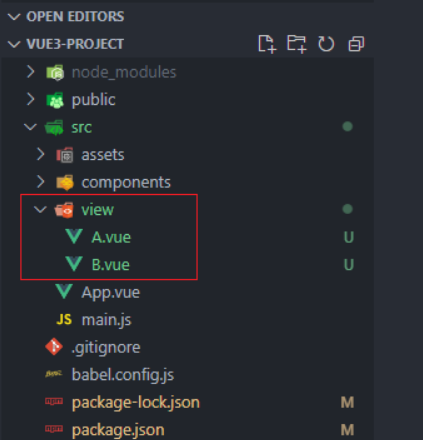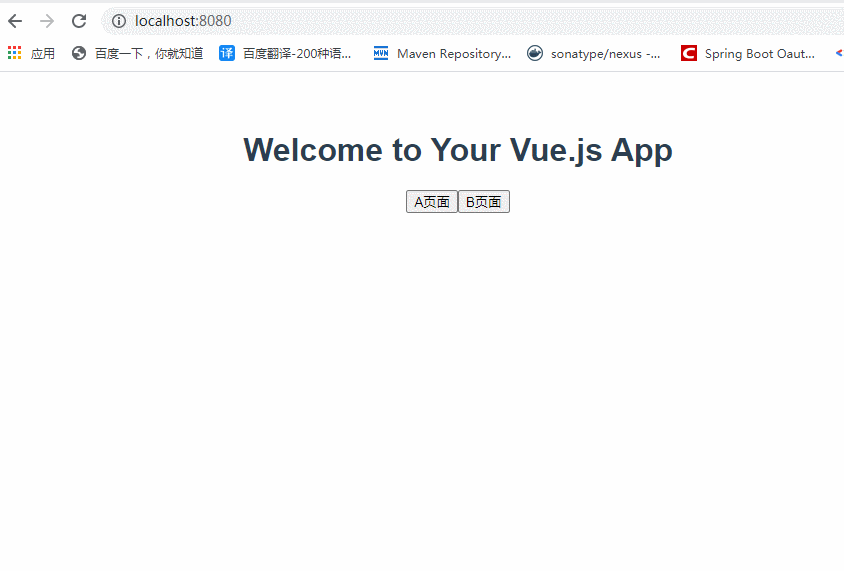vue配置路由
1、安装路由

2、新建页面
这里创建 view目录,然后在view目录下创建 A.vue B.vue 两个 vue页面文件

A.vue内容
<template>
<div>A</div>
</template>
B.vue内容
<template>
<div>B</div>
</template>
3、创建路由配置文件
新建 router目录,然后在 router目录下新建 index.js和 routes.js文件
index.js 文件内容如下
import {createRouter, createWebHistory} from 'vue-router'
import routes from './routes'
const router = createRouter({
history: createWebHistory(),
routes
})
export default router
routes.js 文件内容如下
const routes = [
{
name: 'a',
path: '/a',
component: () => import('@/view/A')
},
{
name: 'b',
path: '/b',
component: () => import('@/view/B')
},
];
在 main.js中配置路由
import { createApp } from 'vue'
import App from './App.vue'
import router from './router/index'
//注意use要在mount之前
createApp(App).use(router).mount('#app')
4、添加 router-view
笔者这里为了演示在 app.vue文件中添加,读者可根据自己的情况进行添加
<template>
<HelloWorld msg="Welcome to Your Vue.js App"/>
<router-view></router-view>
</template>
<script>
import HelloWorld from './components/HelloWorld.vue'
export default {
name: 'App',
components: {
HelloWorld
}
}
</script>
<style>
#app {
font-family: Avenir, Helvetica, Arial, sans-serif;
-webkit-font-smoothing: antialiased;
-moz-osx-font-smoothing: grayscale;
text-align: center;
color: #2c3e50;
margin-top: 60px;
}
</style>
路由控制在 HelloWorld.vue文件中
使用 this.$router.push()方法进行路由跳转
<template>
<div class="hello">
<h1>{{ msg }}</h1>
<div>
<button @click="show('a')">A页面</button>
<button @click="show('b')">B页面</button>
</div>
</div>
</template>
<script>
export default {
name: 'HelloWorld',
props: {
msg: String
},
methods: {
show(index) {
if(index == 'a') {
this.$router.push('/a')
}
if(index == 'b') {
this.$router.push('/b')
}
}
}
}
</script>
5、运行效果



